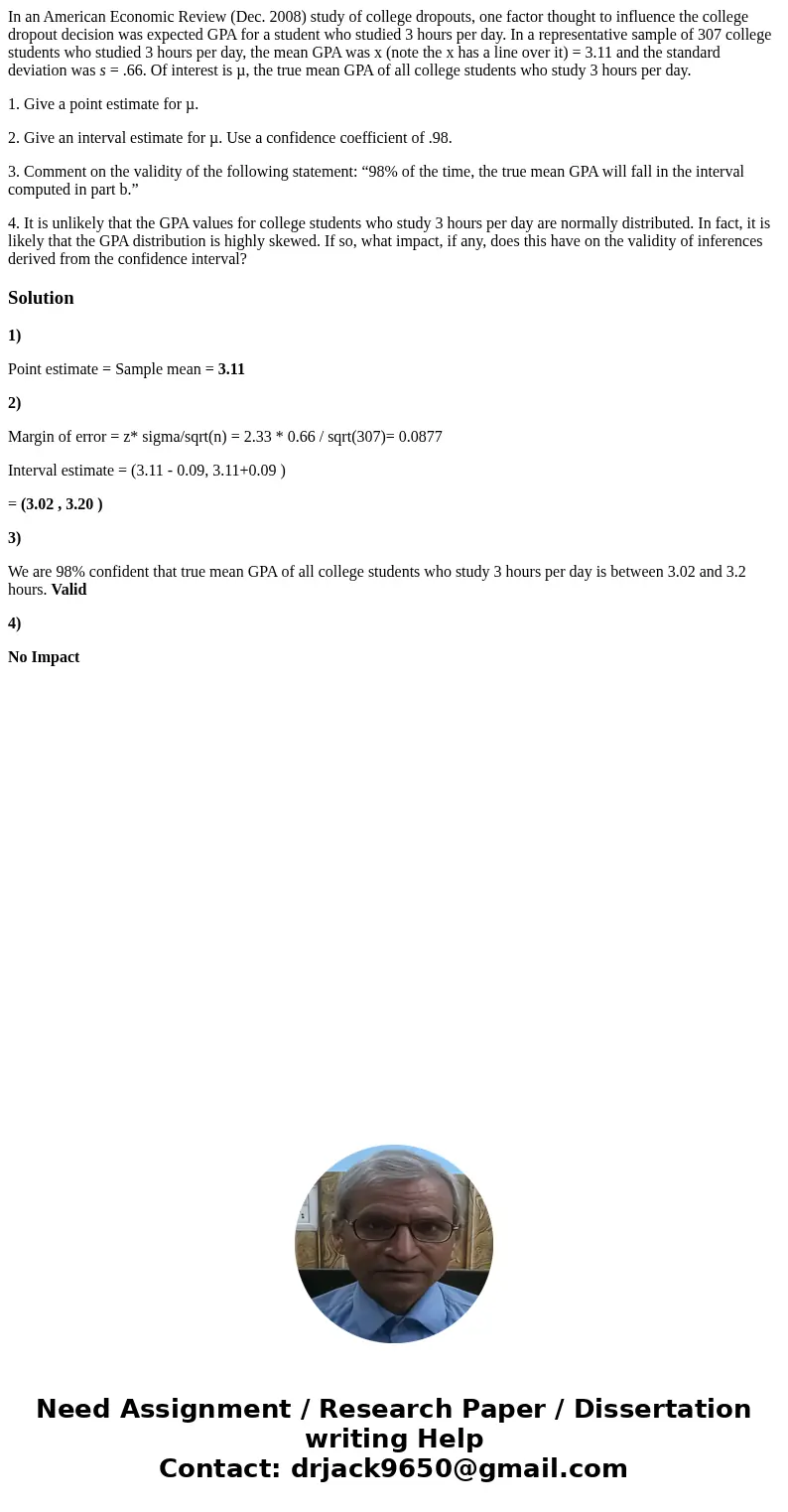In an American Economic Review Dec 2008 study of college dro
In an American Economic Review (Dec. 2008) study of college dropouts, one factor thought to influence the college dropout decision was expected GPA for a student who studied 3 hours per day. In a representative sample of 307 college students who studied 3 hours per day, the mean GPA was x (note the x has a line over it) = 3.11 and the standard deviation was s = .66. Of interest is µ, the true mean GPA of all college students who study 3 hours per day.
1. Give a point estimate for µ.
2. Give an interval estimate for µ. Use a confidence coefficient of .98.
3. Comment on the validity of the following statement: “98% of the time, the true mean GPA will fall in the interval computed in part b.”
4. It is unlikely that the GPA values for college students who study 3 hours per day are normally distributed. In fact, it is likely that the GPA distribution is highly skewed. If so, what impact, if any, does this have on the validity of inferences derived from the confidence interval?
Solution
1)
Point estimate = Sample mean = 3.11
2)
Margin of error = z* sigma/sqrt(n) = 2.33 * 0.66 / sqrt(307)= 0.0877
Interval estimate = (3.11 - 0.09, 3.11+0.09 )
= (3.02 , 3.20 )
3)
We are 98% confident that true mean GPA of all college students who study 3 hours per day is between 3.02 and 3.2 hours. Valid
4)
No Impact

 Homework Sourse
Homework Sourse